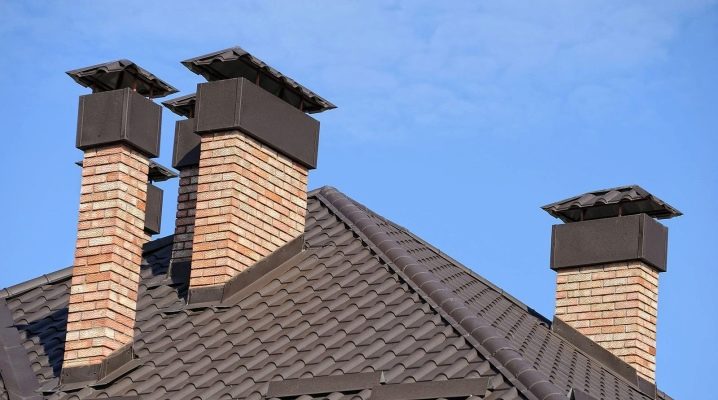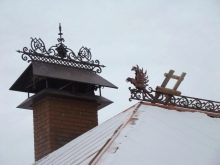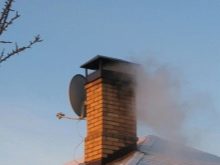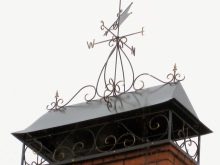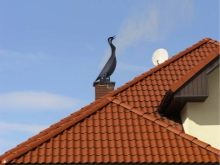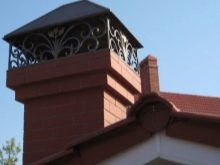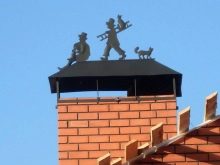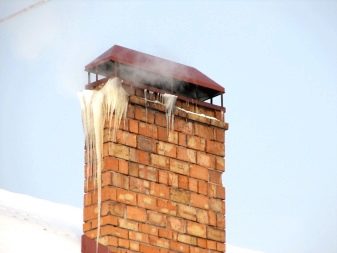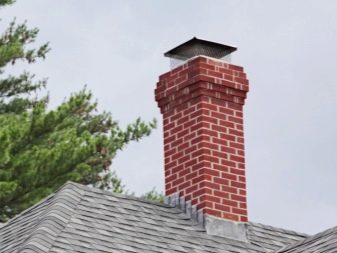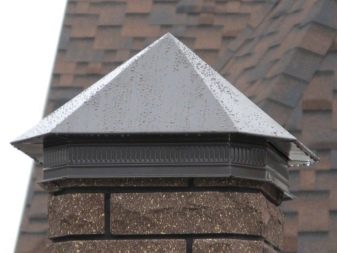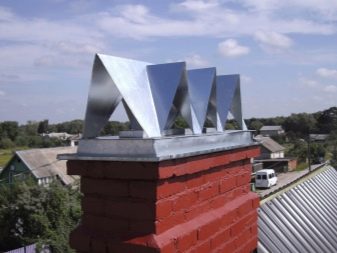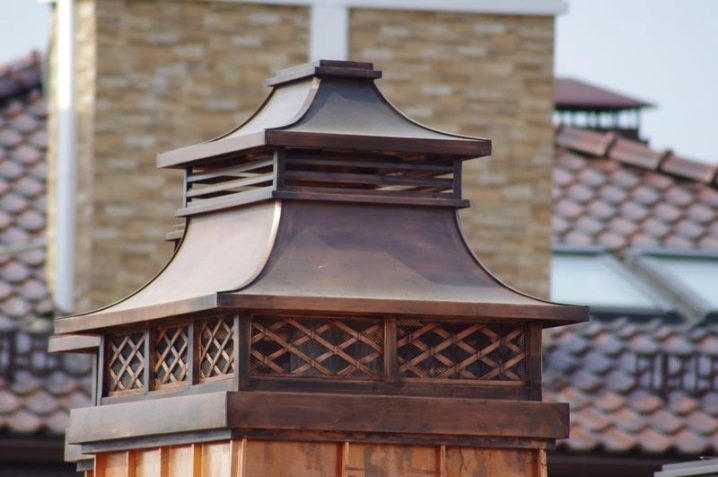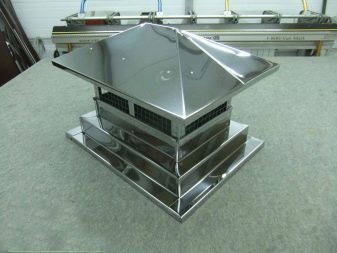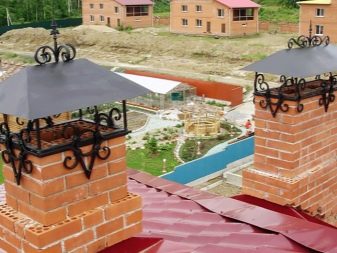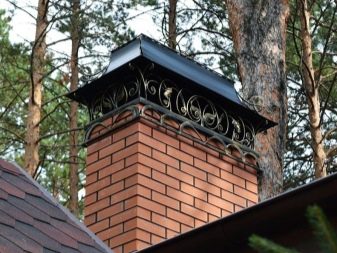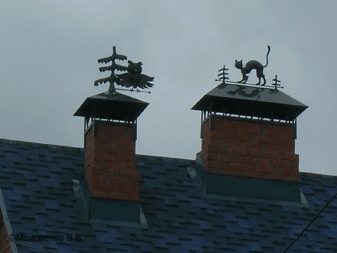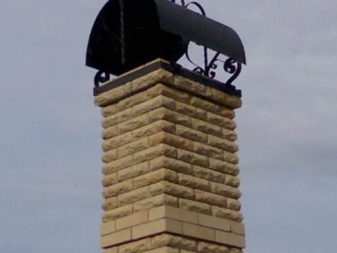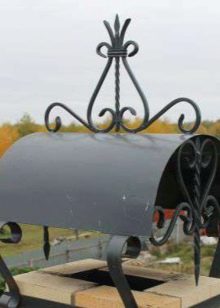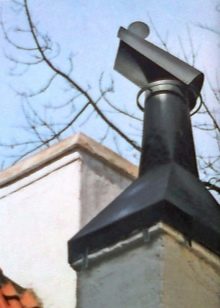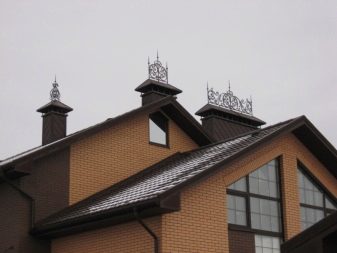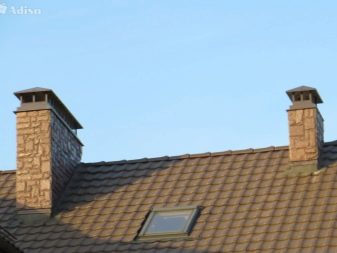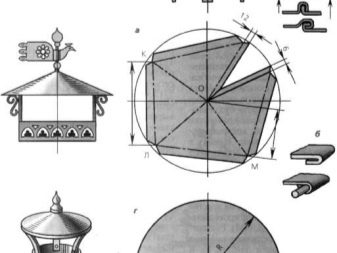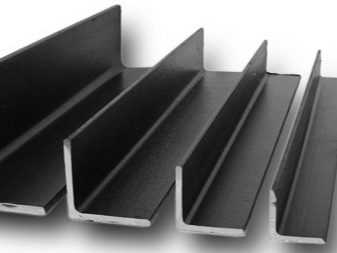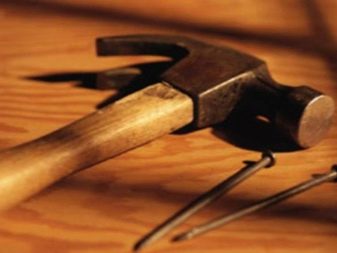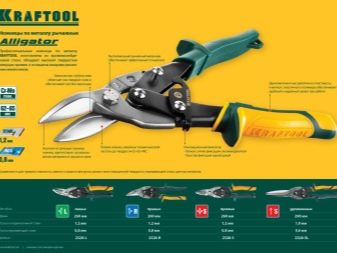Features of chimneys for brick pipes
Home security remains one of the main issues for thousands of years, as well as the provision of heat. Technology has long reached a new level, but the heating of private construction is always accompanied by the threat of carbon monoxide or even fire. Chimneys need protection. Ensuring the safety of the chimney directly affects the safety of the home. It will help ensure the smoke.
Purpose
Smokes can be called completely differently, for example, a cap or a wind vane, but their purpose does not change. They are a structure that is installed not only on chimneys, but also on ventilation and gas ducts.
Stove, pipe from a boiler or fireplace is always important to protect from precipitation, corpses of small birds and other items.The blockage of the chimney can cause the fire to go out, but it also threatens the lives of everyone in the building.
Not being able to climb the pipe, smoke and carbon monoxide will begin to fill the room. And this, in turn, can cause poisoning at best, and death - at worst. Smokes also serve to protect the upper part of a brick pipe from destruction.
Another feature is the decoration of the roof. Smoke can be made independently, buy ready-made in the store or order forged on an individual layout.
Should I install?
This question is asked by many owners of private buildings. Arguments for and against can be found always and for each subject.
Consider the positive aspects of the installation:
- reduces the possibility of fire attenuation due to wind blowing;
- the pipe is protected from trash brought by the wind;
- precipitation will not be able to penetrate the smoke;
- the mesh construction reliably excludes the chimney from the places of possible bird nesting;
- the head of the pipe, protected from precipitation, will last longer;
- decorative elements will be a great decoration.
Professionals claim that such information provided by advertising, such as increased thrust and efficiency, are not reliable.
Among the minuses of the installation of chimneys, the following can be distinguished:
- the hood of the hood can be an obstacle to the products of combustion, preventing their exit. It follows from this that, contrary to advertising, it reduces cravings.
- water vapor from high-efficiency boilers has a temperature of up to 120 degrees. In contact with cold metal, it condenses on the chimney, which during the cold season can lead to the formation of icicles. That, in turn, can lead to disastrous consequences, because ice blocks air circulation.
- modern round chimneys built with the impossibility of building a nest birds.
- Constructed by the rules of the pipe must necessarily have a collector for condensate.
- galvanized chimneys installed over solid fuel heating devices burn through for a period of three to five years. To avoid this, we need more expensive counterparts from the "stainless steel".
Manufacturing material
Choosing a chimney for the house, you need to focus on the desired set of functions. It is also worth paying attention to the term and conditions of operation.
From copper
Such models are considered the most durable, and their appearance - one of the most beautiful. Installation of copper chimneys should be carried out in accordance with strict rules, otherwise they will not last long. The main problem is that copper can react with other metals, which leads to negative consequences. For example, the destruction of a copper chimney.
According to the above, the installation of copper products must be made using copper or copper-coated fixing elements. Copper has a rather long service life, from fifty years. High-quality installation work will only contribute to its increase. Over time, copper products are covered with patina, which gives them a special look and charm characteristic of antiques.
Of steel
In durability, such models are inferior to copper almost five times. Made of galvanized steel, they will last up to thirty years.
Zinc titanium
This modern material for roofing work is becoming increasingly popular. According to the characteristics of products made of zinc-titanium are comparable to copper, and their durability may exceed fifty years.
Species
In addition to the material of manufacture, chimneys differ in design features.
Usually, the chimneys look like a four-pillar roof mounted above the chimney.
In the modern world you can find flyukarki various designs. In addition to new decorative features, they also have technological advantages.
New types of caps flyugarok appeared thanks to new architectural solutions. Smoothies with a flat surface will fit in well with buildings built in the Art Nouveau style. For European style more suitable caps in the form of a hemisphere.
Non-classical types of chimneys:
- multi-skid, thanks to them there is no accumulation of snow in winter, and the effect of ventilation is able to be maintained;
- with a weather vane, the appearance of the figurine can be absolutely anyone, at the choice of the owner of the house, and under the general architectural style;
- With a spark trap, it is the least decorative, but the most convenient to use type of chimney. Often they have an opening lid, thanks to which cleaning of the chimney becomes much easier.
- with the release of the flue pipe, these structures have an opening for ventilation, thereby facilitating the exit of combustion products;
- Spark arrestors are obligatory for installation in pipes where solid fuel materials are used for heating, and the roof is made of reeds, graons or shingles. Spark arrestors should also stand in the brazier pipes (up to three meters high).
Experts do not recommend to install painted steel chimneys above solid-fuel stoves. Under the influence of high temperature, they will change color, and soot will settle on them.
How to make your own hands?
Today on the Internet you can find a lot of drawings, which you can easily make a fly-gun with your own hands. It is better to choose sheet materials, for example, roofing steel.
Choose a drawing should be based on experience, it is better to start with the most simple options.
The tools that will be needed to make the wind vane are included in the following list:
- hammer;
- scissors for metal;
- hardwood or rubber mallet;
- metal corners.
It is better to give preference to flyugarke in the form of a tent or roof. Before performing work it is necessary to carry out a sketch on paper, having previously measured the width of the pipe.
Experts note that the correct chimney should completely close the chimney, but too large size may adversely affect its functionality. You can make a model of a wind vane out of paper or cardboard, fit it in size to a chimney pipe. And only then, on the basis of this layout, cut a part out of metal and give it the desired shape. You can also gradually move from the manufacture of simple chimneys to more complex variations.
For how to make a chimney with your own hands, see the video below.
